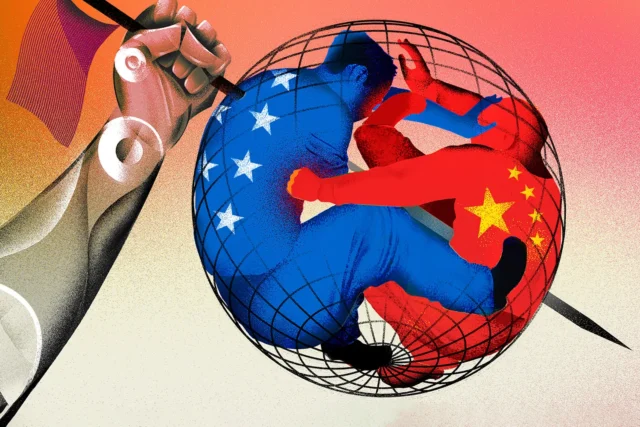
China’s ambitious drive to become a global leader in artificial intelligence (AI) by 2030 faces significant hurdles due to its reliance on U.S. technology, particularly in the crucial domain of semiconductor chips. Despite stringent U.S. export controls designed to curb China’s AI and military advancements, the Asian giant’s tech industry shows resilience, albeit with increased costs and technical challenges.
- U.S. Export Controls: Implemented to limit China’s development of supercomputers and advanced AI systems, these controls target leading chip manufacturers like Nvidia and AMD. However, adaptations such as the Nvidia H800 chip, designed specifically for the Chinese market, mitigate these restrictions, albeit with performance compromises.
- Impact on Chinese Firms: While U.S. restrictions aim to hinder China’s AI capabilities, they inadvertently provide a boost to China’s domestic chip design industry, offering a path to achieve economies of scale and competitive performance over time.
- Biden’s Microchip Ban: The broader implications of the U.S. microchip ban extend to curbing China’s efforts in developing AI-driven military technologies. This includes limitations on semiconductor production capabilities within China, specifically targeting advanced chip manufacturing essential for AI development.
Despite these challenges, China’s determination to reduce its dependency on foreign technology has led to accelerated efforts in domestic chip development and AI applications. The resilience of China’s tech sector, coupled with strategic adjustments to navigate U.S. export controls, underscores the complex interdependence between Chinese aspirations and U.S. technological prowess.
The nuanced battle for AI supremacy reveals deeper geopolitical tensions and the strategic importance of maintaining a lead in critical technologies. As China navigates these restrictions, the global AI landscape continues to evolve, marked by innovation, competition, and the relentless pursuit of technological autonomy.
The U.S. strategy, while effective in the short term, raises questions about the long-term viability of such restrictions in the face of China’s adaptability and the global nature of technological innovation. The situation highlights the delicate balance between national security concerns and the globalized nature of the tech industry, where actions taken by one nation reverberate through the intricate web of international trade and cooperation.











